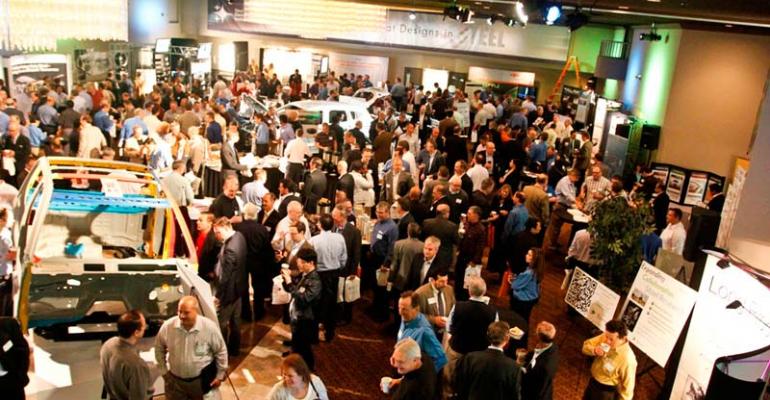LIVONIA, MI – It is standing room only. If steel is on its way out as an automotive material, it is not apparent at the Great Designs in Steel seminar here.
Organizers say attendance is the highest in the event’s 12-year history, with more than 1,500 automotive engineers registered and more than 1,300 walking through the door by mid-morning.
A spokeswoman says registration had to be shut down because the facility only can accommodate 1,500.
The annual event is hosted by the Steel Market Development Institute, a business unit of the American Iron and Steel Institute, the industry’s trade group. The seminar is designed for engineers and steel-industry experts to share information on the latest technologies and success stories.
It is a promotional event for steel, but automotive engineers from General Motors, Ford, Honda and Hyundai are the star presenters, explaining how they used advanced high-strength steels to create sexy and sophisticated vehicles such as the Cadillac ATS, Hyundai Sonata and Ford Escape. Trade groups for automotive aluminum, plastics and other materials hold similar types of events.
Many factors can impact conference attendance, but SMDI President Lawrence Kavanagh says tougher fuel-economy targets coming after 2016 are pressuring engineers to investigate light materials and weight-saving opportunities.
High-profile aluminum-intensive vehicles have grabbed the spotlight recently, such as the ’13 Range Rover cross/utility vehicle. The next-generation Ford F-150 also is expected to be aluminum intensive.
Even so, there are many reasons for engineers to be more interested in the new types of advanced high-strength steels that now are available or in development, Kavanagh says, including cost-efficiency and environmental friendliness.
Steel comprises about 60% of a current vehicle’s weight. When the smoke clears from this materials evaluation period, expected to last several years, steel likely will have about the same percentage in future models, Kavanagh says.
Jody Shaw, director-technical marketing, United States Steel, says an analysis of a recent National Highway Traffic Safety Admin. study shows vehicle bodies made from lightweight alternative materials such as aluminum and carbon fiber may end up saving only a few gallons of gas per year compared with less-expensive steel bodies. Recovering the additional material cost with fuel savings from such vehicles could take nine years or longer.
Since 1995, major steel producers around the world have been pooling their resources to create ultra-light steel auto body concepts that are up to 39% lighter than conventional auto bodies, says Cees ten Brook, director-WorldAutoSteel. Many of the ideas shown in these concepts now are in production or soon will be.
New types of advanced high-strength steel that are even stronger and more easily formed also are discussed in detail, including a ferrous material that uses nano technology and special alloys to create super-strong steel that promises to be a game-changer. “We think this will be a paradigm-changing approach,” says Dan Branagan, chief technical officer of The NanoSteel Company.
While the event mostly is a love fest, steel industry officials still are grilled with tough questions.
One sore spot is carbon-dioxide emissions. Steel makers insist their material is superior because steel manufacturing and part fabrication produces much less CO2 than aluminum smelting or molding carbon-fiber components.
Pragmatic engineers say the fuel-economy regulations they are struggling to meet do not recognize emissions created during material or vehicle manufacturing, making the benefit useless. Others criticize the CO2 argument as disingenuous.
Both aluminum and carbon-fiber producers are finding ways to limit emissions during manufacturing. One example: BMW specifically located its SGL carbon-fiber manufacturing operation in Moses Lake, WA, so it could use carbon-free hydropower.





